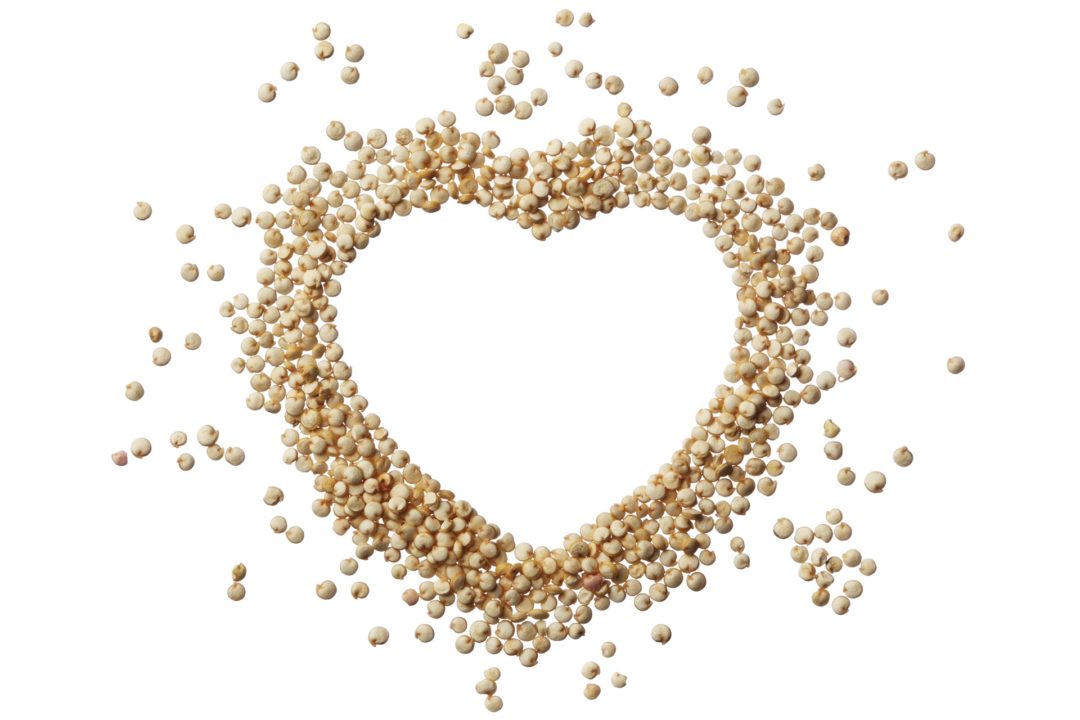Consumers are increasingly disenchanted by “enriched” white breads, made from the low-nutrient starchy part of the inner wheat kernel with nutrients lost in processing added back in to the flour. This accounts for the rapid growth of the whole grain foods market.
A new report from research firm Technavio projects the global whole grain foods market will proceed at a compound annual growth rate of 6.71% from 2017-2021, and sprouted grains are an especially popular trend (1).
“Research suggests that sprouted grains have both higher nutrient content, and in some cases, greater bioavailability of these nutrients,” says Laura Allred, regulatory and standards manager with the Gluten Intolerance Group in Auburn, WA. This doesn’t mean they are gluten free.
“Sprouted grains are grains that have begun to germinate, or grow a new plant,” Allred says. “As they germinate, the growing plant shoot uses enzymes to feed on the proteins and carbohydrates in the grain. But the sprouting process is short, usually just a couple of days. This means that some of the original grain proteins, including gluten, are still intact.
”So people consuming a gluten-free diet should avoid ancient sprouted grains in the wheat, rye and barley families — including einkorn, emmer, farro, Kamut Khorasan wheat, spelt, bulgur and freekeh. Gluten-free grains that are sprouted — such as quinoa, amaranth, buckwheat and chia — are safe for those on a gluten-free diet,” Allred adds.
Kelly Toups, MLA, RD, LDN is director of nutrition for Oldways and the Whole Grain Council (WGC), which is a non-profit education organization and creator of the Whole Grains Stamp certification.
“Much of the sprouted grain research is done on common grains — like brown rice or whole wheat, rather than ‘ancient grains’ like quinoa,” Toups says. “Each study tends to focus on a different grain and a different nutrition in that grain, so we can’t yet make any sweeping [scientific] generalizations across the entire food category.”
Still, Toups points to one study published in the Journal of Agricultural & Food Chemistry (2) that found iron in sprouted millet is 300% more bioaccessible than that of unsprouted millet. In addition, manganese was 17% more bioaccessible and calcium was “marginally” more bioaccessible.
“Seeds are long-term storage packages, designed to keep their goodness locked inside until conditions are right to grow a new plant,” explains Cynthia Harriman, director of food and nutrition strategies for Oldways and the WGC. “When sprouting begins, the process ‘unlocks’ many of the grain’s nutrients, making them more available to our bodies.”
Companies making sprouted grain products currently use two different approaches — dry and wet — once the grains are sprouted. In the wet mash method, sprouted grains are mashed into a thick puree which is used to make products often described as “flourless.” This is implemented by bakers such as Food for Life, Corona, CA, who sprout whole certified organically grown grains, beans and seeds in water and then slowly mash them, mixing into dough in small batches and baked into bread. In the dry flour method, grain is sprouted then dried, locking it in its ideal stage. The dry sprouted grains can be cooked directly or ground into sprouted grain flour and used for baking.
“Dry grains are in a dormant, protected state and can last for many years,” says John Harrison, a customer service representative with Alvarado Street Bakery in Petaluma, CA. “When sprouted, the grain becomes a vital, living plant making many nutrients more bioavailable than those found in ground dry grains (flour). B vitamins, vitamin C, folate and essential amino acids are increased.”
The level of protein found in sprouted grain bread can be 50% higher than ordinary whole grain with double the fiber, Harrison notes.
“Sprouted grains are a powerhouse of nutrition,” agrees Brandi Evans, author of “The Everything Sprouted Grains Book.” “Sprouting activates food enzymes; increases vitamin content; and neutralizes ‘antinutrients,’ such as phytic acid, that can block the absorption of minerals.”
The process of sprouting breaks down starches in grains into simple sugars, which aids digestion. It also breaks down the enzyme inhibitors allowing the body to more easily absorb calcium, magnesium, iron, copper and zinc. Sprouting also releases more antioxidants that are naturally stored in the grains and seeds, produces vitamin C and increases the vitamins B2, B5 and B6.
Because of the demand for ancient grains such as quinoa, there has been a global production surge that has decreased prices paid to growers. Inca Organics, of Athens, GA, is a bulk wholesaler of certified organic South American grains with a social mission to offer 100% whole grain organic quinoa grown by more than 4,000 indigenous farmers in Ecuador. The company has witnessed the price pressure caused by this production surplus, but continues to uphold its mission. “We continue to only purchase from sources that pay the farmer fair trade prices,” says Jane Harrison, head of marketing for the firm.
Here are a few of the ancients:
Quinoa is an Andean pseudocereal that contains 14.6% protein. Quinoa has more riboflavin, a-tocopherol and carotenes than barley, rice or wheat, but only a fifth as much niacin (3). It’s been estimated that the indigenous grains and pseudocereals may have accounted for a quarter of the diet of the Inca empire. Pre-Colombia Andean peoples used it at times to replace completely animal protein in the diet. The iron in quinoa also shows very good bioavailability (3).
“There are many biological pathways that would explain why whole grains like quinoa are beneficial,” says Qi Sun of Harvard University’s School of Public Health. “Unlike white or refined grains that have been milled and stripped of their nutrients, whole grains contain the entire grain kernel, which provides fiber, iron and several B vitamins. Fiber improves cholesterol levels, helps insulin sensitivity and promotes satiety — the feeling of being full after eating — which reduces the risk for obesity-related health issues and stroke.”
Einkorn is a wheat variety that dates back thousands of years and was one of the first cultivated cereal grains. Like two other ancient wheats, emmer and spelt, einkorn is a covered wheat. When most modern wheat is harvested, threshing separates the wheat (kernels) from the chaff (the outer coverings). Einkorn kernels remain within their coverings, so the wheat must be hulled after harvesting.
Einkorn wheat contains more protein than modern hard red wheat and has more phosphorus, potassium and vitamin B6, according to Purdue University’s Center for New Crops and Plant Products (4). It is rich in carotenoids, the naturally occurring red, orange and yellow pigments in many fruits and vegetables and some grains. The body can turn some carotenoids, especially beta-carotene, into vitamin A. Carotenoids may also help to reduce the risk of cancer and other diseases, according to the Linus Pauling Institute.
Spelt, emmer and einkorn make up a family of wheats the Italians call “farro.”
Kamut is a commercial name for Khorasan wheat, and contains up to 40% more protein than traditional wheat. It’s richer in zinc, magnesium and selenium as well as many polyphenols and fatty acids. It is known as a “high-energy grain” because of its high percentage of energy-producing lipids (5).
Amaranth was cultivated by the Aztecs 8,000 years ago and is emerging into the forefront among grains because it is also higher than most vegetables in minerals, such as calcium, iron, phosphorus, and carotenoids. One cup has 28.1 grams of protein, compared to 13.1 grams in rice (6). It is also a great source of lysine, an important amino acid, with protein content comparable to that of milk but more easily digested in the form of albumin and globulin. One study reported amaranth seeds also contain the phytochemical compounds rutin and nicotiflorin, which can help lower hypertension. WF










